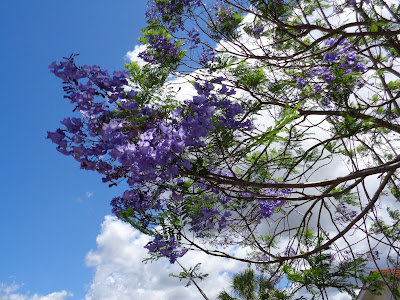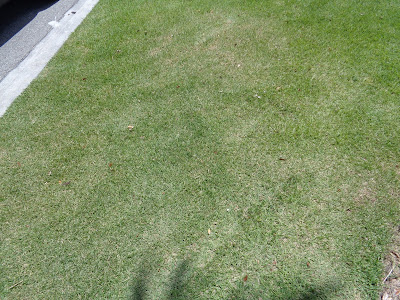While you will not normally see magnolias in natural areas
in Charlotte County, they are a popular flowering tree and are widely
planted. Almost every commercial site has one or two magnolias planted, and many homeowners want one. The cultivar
known as ‘Little Gem’ is a very common variety suitable for our area.
Magnolias are slow-growers and it will take
many years for a ‘Little Gem’ to attain its full potential height of around
thirty-five feet tall. The good news is that this variety begins to bloom
when it is a couple of years old and barely four-foot tall! We are pushing the natural range of
magnolias a bit here in Charlotte County, but they are perfectly hardy all the
way down to zone 10a. So, if you really want a magnolia, ‘Little Gem’ is
a good selection.
The normal sized southern magnolia is a huge tree growing
over sixty-feet tall. The leaves are even large – shiny green and up to
eight inches in length. The flowers are enormous as well measuring up to
a stunning twelve-inches wide. The
creamy-white flowers are also fragrant and are followed by large, reddish seed
pods. As this tree is stately and needs some space to grow, the normal
southern magnolia may not be the best choice for a residential lot.
However, there are over one-hundred varieties of southern magnolias, and ‘Little Gem’ is one cultivar that will
definitely fit most yards with the “relatively
dwarf” features of reduced stature, four-inch leaves and six-inch
flowers.
Now ideally, this southern magnolia prefers acidic soil –
something that we are often lacking in our residential fill soils. Peaty,
moist soils will help ‘Little Gem’ do well in full sun and hot weather.
This tree will tolerate slightly higher pH soil, but truly alkaline soils may
cause it not to thrive – check the soil pH before you plant. Partial shade
can be tolerated in somewhat drier conditions. If plenty of root growing
space is provided, this magnolia can be considered moderately drought
tolerant. And speaking of roots, be careful of circling roots and correct
them in the root ball at planting so that they do not become girdling roots.
If you look around, some of the magnolias planted are not growing to their fullest capacity in
our area. Site evaluation, tied to
good establishment and aftercare, go a long
way to ensuring the success of ‘Little Gem’. So, if a magnolia is a must
have in your landscape, check your soil pH and locate yourself a ‘Little
Gem’. For more information on all types of flowering trees suited for our
area, please call our Master Gardener volunteers on the Plant Lifeline on
Mondays, Wednesdays and Fridays from 1 to 4 pm at 764-4340 for gardening help
and insight into their role as an Extension volunteer. Don't forget to
visit our other County Plant Clinics in the area. Please check this link
for a complete list of site locations, dates and times - http://charlotte.ifas.ufl.edu/horticulture/Plant%20Clinics%20Schedule.pdf.
Resources:
Gilman, E. F. & Watson, D. G. (2014) Magnolia
grandiflora ‘Little Gem: Southern Magnolia. Magnolia
grandiflora. The University of Florida Extension Service, IFAS.
Christman, S. (2006) Magnolia grandiflora. Floridata.com,
Tallahassee, FL.
The Florida-Friendly Landscaping™ Guide to Plant Selection
and Landscaping Design (2010). The University of Florida Extension
Service, IFAS.
Magnolia grandiflora (2016) http://florida.plantatlas.usf.edu/img/logoFL.jpg
- Florida Plant Atlas.






